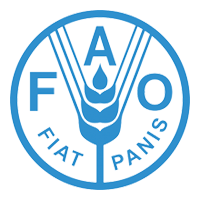Gathering of Wild Food Plants in Anthropogenic Environments across the Seasons: Implications for Poor and Vulnerable Farm Households.
This article presents the results of a study conducted in Northeast Thailand on wild food plant gathering in anthropogenic areas and the implications for vulnerable households. A sub-sample of 40 farming households was visited every month to conduct seven-day recalls over a 12-month period on wild food plant acquisition events. Results show that these plants are an essential part of the diet, constituting a "rural safety net" particularly for vulnerable households. Findings reveal that anthropogenic environments have seasonal complementarity throughout the year with respect to wild food gathering and farmer's gathering of wild food plants from anthropogenic environments complements seasonal crop availability. This study contributes to a deeper understanding of these plants as a household asset and their potential contribution to household well-being. The results of this study furthers our understanding of dietary traditions and the scientific challenge of the partitions that have for decades divided agriculturalists and gatherers.
Related Resources

Conceptualising Inclusive Innovation: Modifying Systems of Innovation Frameworks to Understand Diffusion of New Technology to Low-Income Consumers
Inclusive innovation is the means by which new goods and services are developed for and/or by the billions living on lowest incomes. Although a topic of increasing interest, it has been relatively under-researched and under-conceptualised to date. This article studies...
Contribution of Farmer-to-Farmer Video to Capital Assets Building: Evidence from Bangladesh
This study reports on the contribution of farmer– to-farmer video-mediated group learning to capital assets building of women in resource-poor households. Data were collected using structured interviews with 140 randomly selected women in 28 video villages and 40 women in...
A ‘Systemic Theories of Change’Approach for Purposeful Capacity Development
In this article is presented an emergent capacity development approach that the authors have developed through participatory action research in Peru and Ecuador, which they call ‘systemic theories of change’ (STOC), for organisational capacity development. They argue that capacity development should be...
With or Without a Script? Comparing Two Styles of Participatory Video on Enhancing Local Seed Innovation System in Bangladesh
Recent experiences in participatory video-making raise the question of how best to use this medium for enhancing local seed innovation systems. Embedded in a mini-process of participatory action research, two styles of participatory video—scripted and scriptless—were tested and assessed together...
Using Programme Theory to Evaluate Complicated and Complex Aspects of Interventions
This article proposes ways to use programme theory for evaluating aspects of programmes that are complicated or complex. It argues that there are useful distinctions to be drawn between aspects that are complicated and those that are complex, and provides...


